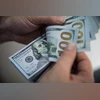The dollar slipped on Thursday, a day after surging to a two-year peak after the Federal Reserve rocked markets by signalling a much slower pace of rate cuts in 2025, while the yen slid after the Bank of Japan (BOJ) stood pat on rates.
Currencies around the world tumbled on Wednesday after the Fed decision boosted the dollar, although many rebounded on Thursday in choppy trading conditions with thin volumes ahead of the holiday period.
The BOJ kept interest rates steady as expected, but the yen fell sharply as Governor Kazuo Ueda gave little away in a post-meeting press conference.
The dollar rose as much as 1.4 per cent against the yen to 157.11, its highest since July.
Investors had been looking out for hints of imminent BOJ tightening, particularly after the Federal Reserve struck a hawkish tone at its meeting a day earlier.
But the governor reiterated that policymakers would need more time to assess incoming economic data and the implications of U.S. President-elect Donald Trump's policies.
More From This Section
"I think the market was anticipating that the furthest they would go today would be a hawkish hold," said Jane Foley, head of FX strategy at Rabobank.
"But some of the comments Ueda has made could perhaps be interpreted as not being very hawkish. For example that he's waiting to see data on the momentum of wages in the spring wage talks."
In the broader market, the fallout from the Fed continued to ripple across markets after traders heavily dialled back on easing expectations next year.
The dollar index was last down 0.38 per cent after jumping more than 1 per cent on Wednesday to a peak of 108.25.
The euro, which tumbled 1.34 per cent on Wednesday, managed to claw back some losses and was last 0.65 per cent higher at $1.0418.
Foley at Rabobank said the euro was naturally rebounding and volatility was higher due to low holiday trading volumes.
The dollar's rally sent its peers including the Canadian dollar and the South Korean won tumbling, although many currencies found a footing against the greenback on Thursday.
"We think (the) decision marks the start of an extended pause from the FOMC, even if it is a little too early to say this explicitly," said Nick Rees, senior FX market analyst at Monex Europe.
"An upward adjustment in market expectations should support dollar upside over the coming months."
The Canadian dollar sank to its lowest in over four years at 1.4466 per U.S. dollar. The won tumbled to its weakest level in 15 years.
Fed Chair Jerome Powell said more reductions in borrowing costs now hinge on further progress in lowering stubbornly high inflation, sending global stocks plunging and bond yields spiking.
Policymakers estimated they would be likely to lower borrowing costs by just 50 basis points next year, 50 basis points less than they envisaged in September.
The Bank of England also announces its policy decision later on Thursday. It is expected to hold rates at 4.75 per cent.
Ahead of the outcome, sterling climbed 0.7 per cent to $1.2661 after shedding 1.08 per cent in the previous session.
China's onshore yuan finished the domestic session at 7.2992 per dollar, the weakest close since November 2023.
Australia's dollar bottomed at $0.6199, a two year low, but was last up around 0.4 per cent.
The kiwi dropped to a two-year low before also ticking up. Data on Thursday showed New Zealand's economy sank into recession in the third quarter.
The Swedish and Norwegian crowns both rebounded against the dollar on Thursday, after Sweden cut rates but Norway held them steady.
(Reporting by Rae Wee and Vidya Ranganathan in Singapore, and Harry Robertson in London; Editing by Sam Holmes, Lincoln Feast, Shri Navaratnam, Peter Graff)
(Only the headline and picture of this report may have been reworked by the Business Standard staff; the rest of the content is auto-generated from a syndicated feed.)

)
